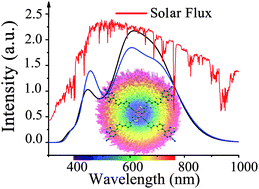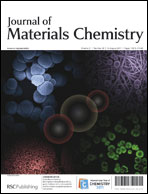A rational design strategy for donors in organic solar cells: the conjugated planar molecules possessing anisotropic multibranches and intramolecular charge transfer†
Abstract
A strategy used to design novel high performance donor molecules for organic solar cells has been proposed by using double overlapping wave bands for broad and intensive absorption based on three types of high mobility building blocks, i.e., the multibranching electron-rich fragment (DF), the different electron-excessive π-bridges (BF), and the proper electron-deficient fragment (AF). The multibranched π-conjugated DF–(BFi)n donor fragment provides the strong and broad short and middle wavelength π–π* absorption, while the anisotropic multibranched intramolecular charge transfer between the DF–(BFi)n donor fragment and AFs favours the strong and broad middle and long wavelength absorption. This concept is confirmed by the theoretical design of the planar X-shaped (AF–BF1)2–DF–(BF2–AF)2 conjugated donor molecules constructed by benzo[1,2,-b : 4,5-b′]dithiophene as the DF, bithiophene (BF1) and


 Please wait while we load your content...
Please wait while we load your content...